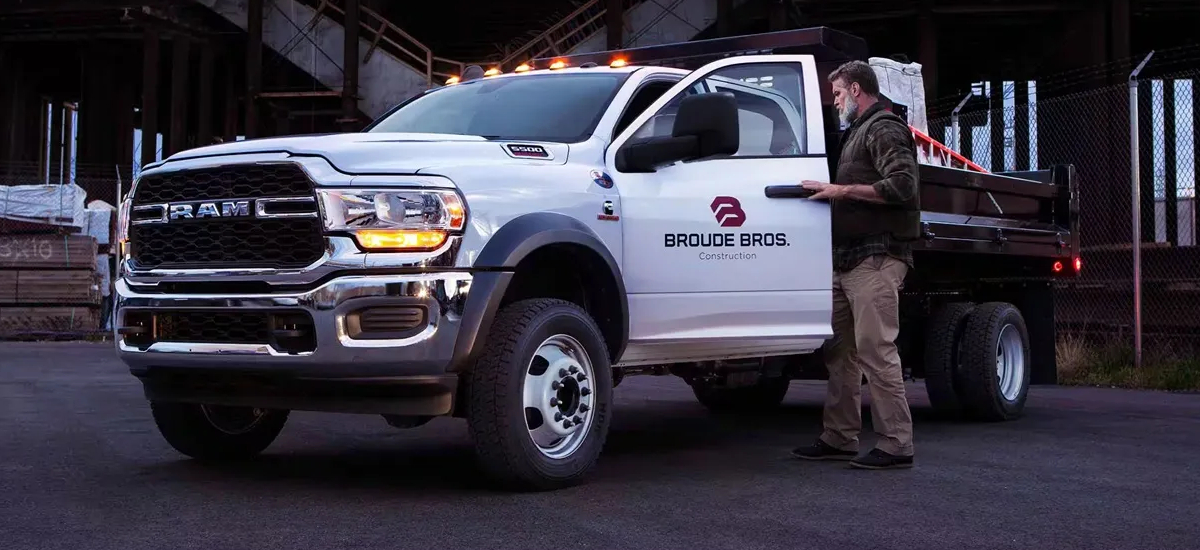
 Your Credit Estimate
Your Credit Estimate
 Your Credit
Your Credit
Your zip code helps us provide you with the most accurate vehicle pricing and vehicle availability.
We estimate your credit score to give you an idea of your monthly payments. To get an accurate payment amount, complete our credit application by clicking the Start Credit Application button below.
start credit application
Automotive group Stellantis announced a decade-long business strategy to produce 75 new battery-electric vehicles (BEVs) by 2030 called “Dare Forward 2030”. With the help of some of its larger brands – Dodge, Jeep, and Ram – this is already becoming a reality. Dodge recently debuted its first all-electric vehicle, the Dodge Charger Daytona SRT BEV, and Ram debuted the 1500 REV. Jeep is still working on its promise to electrify every model in the lineup, with the Jeep Gladiator 4xe next on the list. Ram Truck also came out with something interesting last year (2023), called the 1500 Ramcharger, an electric vehicle with a gasoline engine that powers an onboard generator. The next big deal is the first U.S. Stellantis hydrogen fuel cell electric vehicle (HFCEV), also a Ram Truck.
This wouldn’t be the first hydrogen fuel cell vehicle by Stellantis. Already available in select markets through Stellantis Pro One, hydrogen fuel cell vehicles are starting to gain some traction. Only 350 units have been sold thus far, and mainly for commercial fleet vehicles, but the automotive group expects that number to jump to 100,000 by 2030. How is that possible? By expanding the market commercial hydrogen-powered trucks are sold, of course. And what better market than North America, or more importantly, the U.S.?
Americans love their pickup trucks of all shapes and sizes, and aside from the rumored Ram 1200 midsize pickup truck, Ram has three vehicles set for a 2025 release: the 1500 Ramcharger, 1500 REV, and a Ram HFCEV. With reports stating that Stellantis will begin production of hydrogen-powered versions of RAM pickup trucks in Mexico, a plant in operation since 1995, we can expect to see these vehicles within the next two years. The only downside from Ram Truck lovers is the first Ram HFCEVs will be strictly work trucks, made for the 5500 lineup.
If the Ram 5500 doesn’t sound familiar, that would be because it’s strictly a commercial truck built with a cab and a chassis to do some serious towing. Starting from the standard 5500 tradesmen, the towing capacity is 18,860 when properly equipped, plus a payload capacity of 11,010 when properly equipped. Ram already made the new Ram ProMaster popular amongst commercial fleet vehicle managers with an electric version, able to get serious work done without hurting the environment. It sounds like Stellantis wants to piggyback on that success with a hydrogen-powered work truck.
After all, the Ram ProMaster electric cargo van was made available years before the 1500 REV is set to hit dealership lots. Perhaps Ram Truck is doing the same thing – first going big before finding a way to put all of that power into a more compact package. Otherwise, it would be a real loss if we don’t see any Ram 1500 models with a hydrogen fuel cell powertrain. If Stellantis expects to sell 100,000 units and make 40 percent of all sales from fuel cell vehicles, only producing 5500 HFCEVs doesn’t sound like a smart move. We should know more about this vehicle and other plans as we get closer to 2030.
Want to learn more about the Ram 5500 HFCEV and other electrified Ram Trucks? Follow along with us on NowCar social media.